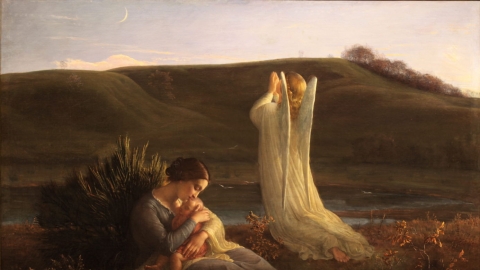Towards a Female Diaconate?

Sister Linda Pocher
The female diaconate issue has returned to the news after an interview given by Sr. Linda Pocher, a religious sister who participated in the last two meetings of the C9, the council of cardinals who assist the Pope on the reform of the Church. These meetings took place between December 4-5, 2023 and February 5-6, 2024.
Sr. Linda Pocher, a Spanish Salesian, is a professor of Christology and Mariology at the Auxilium in Rome. Three other women were also invited: Lucia Vantini, an Italian professor of theology and religion; Giuliva Di Berardino, consecrated virgin of Verona and teacher of spirituality, and Jo Bailey Wells, “bishop” and assistant general secretary of the Anglican Communion.
In an interview given to the Spanish-speaking agency Europa Press, the Salesian sister affirmed, among other things, that the Pope would be “very favorable to a female diaconate.” However, Francis is trying “to determine how to put it into practice.”
This affirmation of papal determination leaves open some questions. Indeed, in several interventions, Francis had quite clearly ruled out the possibility of the female diaconate. But to an attentive observer, it was clear that the Pope was going to do something in this direction: not in the sacramental order, which would be impossible, but in the practical order.
What follows confirms this judgment. The sister explains that, in fact, the Pope wants to change the way in which the Church “thinks and lives the difference between the ordained ministry and the baptismal priesthood, by extending to all the baptized certain rights which, until recently, belonged to bishops, priests, or religious.”
Related Article:
The fact that Holy Orders is one of the sacraments, and that it has at least three degrees according to the Council of Trent, is unavoidable. The fact that it is a matter of faith that it is reserved for men is also unavoidable. The response of the two pontifical commissions, from 2016 and 2020, have also confirmed these conclusions, according to Francis himself.
So how to go about creating a female diaconate? By a circumvention that will create confusion. The “redistribution” of powers between the ordained ministry and the baptismal priesthood is clearly the path followed by the Pope. In other words, women will be entrusted with certain powers of the diaconate in an “ordinary” way and will receive a “diaconal” blessing.
Thus, the distribution of Holy Communion, baptism, the homily (which was recently refused to the laity by Cardinal Arthur Roche, Prefect of the Dicastery for the Sacraments), and assistance at marriages could be given in an “ordinary” way to these deaconesses. There is perhaps even a liturgical function for them at Mass.
There would then be a female non-ordained “diaconate,” but which could carry out the main functions of the deacon. The result of this is that the sacrament of Holy Orders would gradually be drowned out, diluted, and despoiled. There would also be grave questions about the legitimacy of some of these reforms.
For example, giving the homily falls under the power of jurisdiction which is associated with the sacrament of Holy Orders, and it is through this jurisdiction that the deacon may preach at Mass. Furthermore, solemn baptism can only be administered in an “extraordinary” manner by the deacon. No one else can solemnly administer this baptism.
Finally, it is clear that this measure will not satisfy the most progressives who demand an ordained female diaconate.
(Source : cath.ch/Europa Press – FSSPX.Actualités)
Illustration : Facebook Linda Pocher Fma





